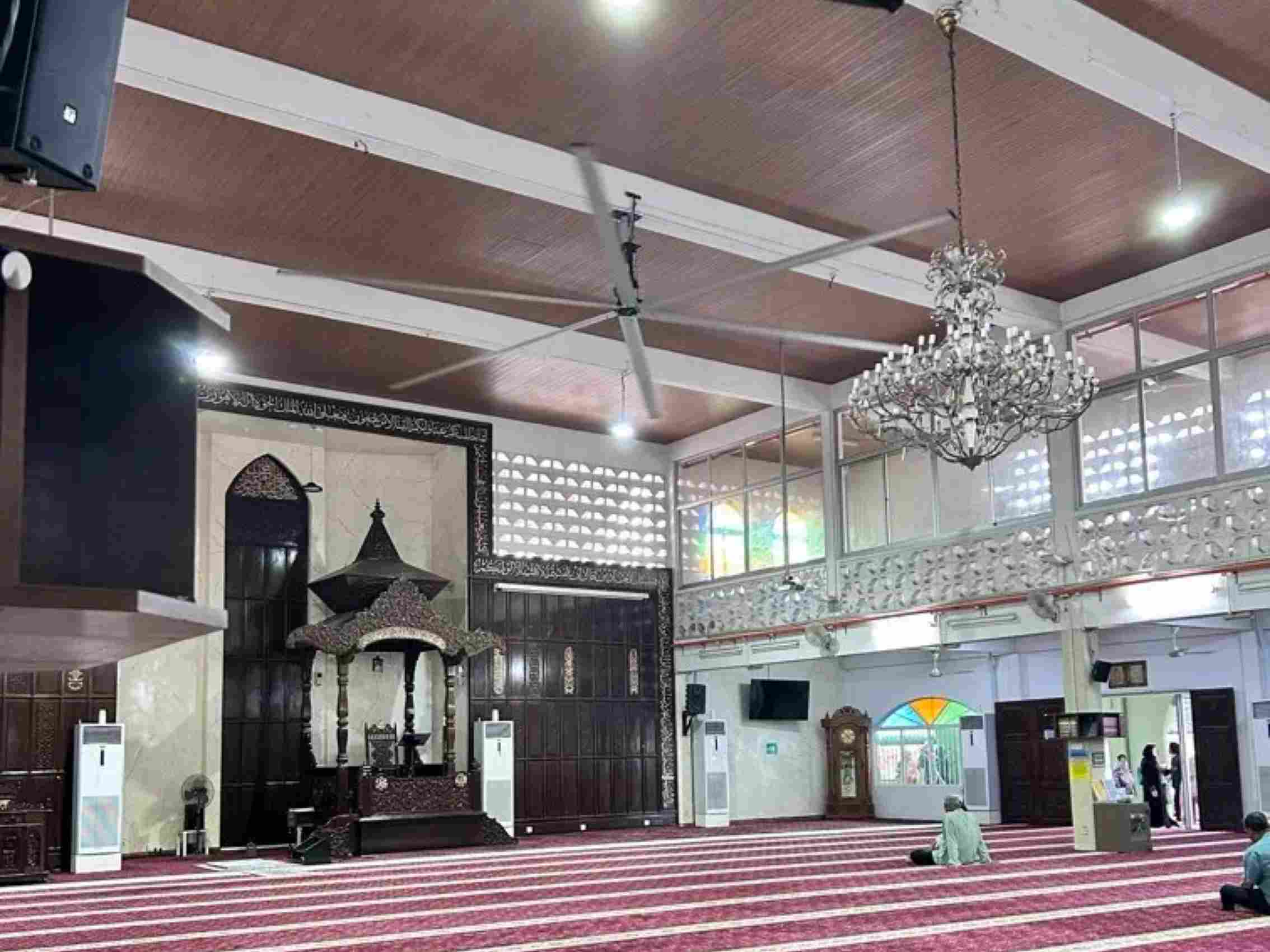HVLS(High-Volume, Low-Speed)fans are large ceiling fans designed to move large volumes of air efficiently at low rotational speeds. Below is a general outline of typical HVLS fan specifications:
1. Size
- Diameter: Typically ranges from 3.6meters (12 feet) to 7.3 meters (24 feet).
- Blade Width: Varies based on model and design.
2. Material
- Blades: High-strength aluminum or composite materials for lightweight and durability.
- Frame: Steel or aluminum, often powder-coated for corrosion resistance.
3. Motor
- Type: Direct-drive motors (gearless) or gear-driven motors.
- Power: Varies from 0.4 kW to 1.5 kW depending on the fan size and application.
- Voltage: Compatible with 220V/380V (single-phase or three-phase) systems.
- Efficiency: Typically high-efficiency, brushless motors with low energy consumption.
4. Performance
- Airflow: Capable of moving up to 500,000 CFM (Cubic Feet per Minute) or more.
- Speed: Adjustable, with maximum speeds typically between 50-120 RPM.
- Coverage Area: Effective coverage of up to1,350 square meters depending on fan size and placement.
5. Noise Level
- Quiet operation, generally below 40 dB at full speed.
6. Control System
- Features: Remote or wall-mounted control panels with variable speed settings.
- Options: Wireless Interlinked Remote Control Systems.
7. Safety Features
- Blade Reinforcements: To prevent deformation or detachment.
- Safety Cables: For secure mounting.
- Emergency Stop: Integrated in the control system.
8. Installation Requirements
- Mounting Height: Minimum recommended clearance is 3.5 meters (11.5 feet) from the floor.
- Ceiling Structure: Must be capable of supporting the fan's weight (typically 100-120 kg).
9. Certifications
- Compliance with relevant industry standards (e.g., ISO, CE, UL).
For precise specifications, it's recommended to refer to the product datasheets provided by specific manufacturers.
 New Year Holiday Notice
New Year Holiday Notice
 Large Ceiling Fans: The Soluti
Large Ceiling Fans: The Soluti
 Enhancing Public Comfort with
Enhancing Public Comfort with
 Fall Prevention Measures for L
Fall Prevention Measures for L
